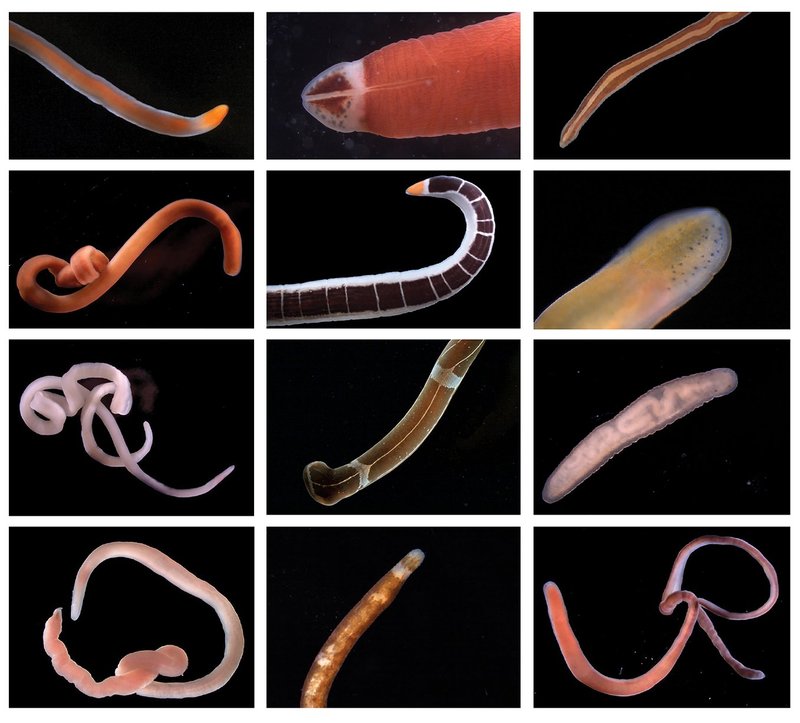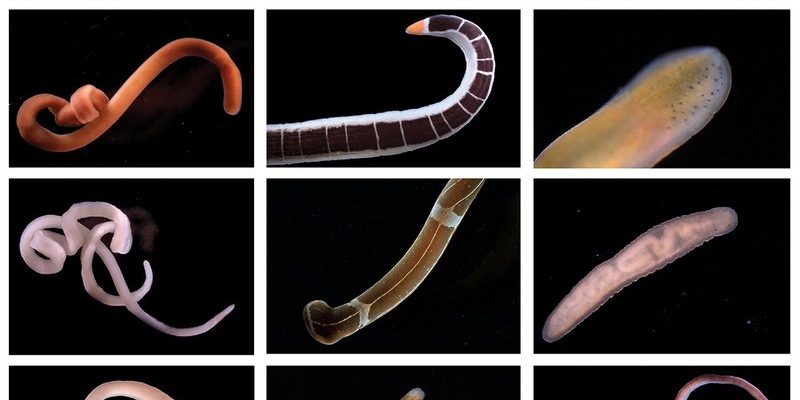
You might be wondering just how sensitive these worms are to their environment. Honestly, their reactions unveil a lot about not only their survival strategies but also the health of their marine habitats. Imagine that each time the water temperature shifts or pollution levels rise, these worms have to either adapt or face serious challenges. Let’s dive in and explore how ribbon worms really react to environmental changes, and why these adaptations are crucial for their survival.
What Are Ribbon Worms?
Before we dive into how ribbon worms react to environmental changes, it’s important to know a bit about them. Ribbon worms, or *Nemertea*, are a diverse group of invertebrates. They typically have long, slender bodies that can stretch to impressive lengths—some reaching up to 30 meters! These creatures are found in various aquatic environments, from deep ocean floors to intertidal zones.
One defining feature of ribbon worms is their proboscis, a long, tube-like structure they use for capturing prey. Imagine it like a fishing rod that they can extend and retract. This not only helps them hunt but also plays a role when they react to environmental changes. Their soft, sometimes brightly colored bodies can also be quite mesmerizing!
You might see them in various colors, ranging from deep reds to yellows and greens. This isn’t just for show; these colors can sometimes indicate their health or the specific environment they live in. Understanding what ribbon worms are can help us appreciate their adaptability when faced with environmental stressors.
Temperature Changes and Behavioral Adjustments
Temperature fluctuations are a common challenge for many marine organisms, including ribbon worms. These creatures are ectothermic, meaning their internal body temperature is influenced by their surroundings. As ocean temperatures rise or fall, ribbon worms must react quickly to stay alive.
When water warms up, ribbon worms often become more active. It’s almost like they’re getting energized by the heat! Increased temperature can lead to faster metabolic rates, which means they need more food. In colder waters, however, they may become sluggish, conserving energy until conditions improve. This adaptability is crucial for their survival but can lead to challenges, especially if temperatures rise too high or drop too low.
Plus, temperature changes can affect the availability of food sources. If their prey—like small mollusks or crustaceans—becomes scarce, ribbon worms might need to explore new areas. This behavior demonstrates their ability to adapt to environmental changes, showcasing how connected they are to their ecosystems.
Oxygen Levels: A Matter of Survival
Oxygen is vital for all living organisms, and ribbon worms are no exception. In densely populated or polluted waters, oxygen levels can drop significantly, leading to potential suffocation. When this happens, ribbon worms have a unique way of responding.
Some species can burrow into the substrate to find layers of sediment with higher oxygen content. Think of it as seeking refuge in a safe haven. By digging down, they can avoid the low-oxygen environment at the surface. Additionally, they might alter their feeding habits, becoming more opportunistic to ensure they can find enough food while conserving energy.
Interestingly, these worms can also demonstrate a behavior known as “aerotaxis,” where they move towards areas with more oxygen. Isn’t it fascinating how they instinctively know where to find the most life-sustaining resources? This adaptability not only increases their chances of survival but also highlights their important role in the ecosystem.
Changes in Salinity and Their Impact
Salinity—the amount of salt in water—is another environmental factor that can affect ribbon worms significantly. They thrive in brackish water, where fresh and saltwater mix. However, sudden changes in salinity can be stressful for them.
When rainfall dilutes saltwater, some ribbon worms may struggle to adapt quickly. They can only tolerate a narrow range of salinity levels. In response, they might seek deeper waters where salinity levels stabilize. Alternatively, if salinity levels increase due to evaporation or drought conditions, they might display stress behaviors. This can include reduced activity or even attempts to expel excess salt.
You might be surprised to learn that some ribbon worms can also adjust their internal chemistry to help manage fluctuations in salinity. This ability to osmoregulate is key to their survival, showing just how adaptable they can be in the face of environmental changes.
Pollution and Its Effects on Ribbon Worms
Pollution presents a significant threat to many marine organisms, and ribbon worms are no exception. When pollutants enter their habitats—like heavy metals, plastics, or chemicals—they can be severely impacted. Ribbon worms are sensitive to these changes, and their reactions can provide important clues about the health of their ecosystems.
In polluted environments, ribbon worms may exhibit behavioral changes, such as decreased reproduction rates. With fewer healthy births, it can impact their populations over time. To combat pollution, these worms often attempt to retreat into sediments or other protective areas, hoping to find cleaner environments.
You might also find some studies highlighting how ribbon worms can bioaccumulate pollutants. This means that harmful substances can build up in their bodies over time. For researchers, studying these worms can offer insights into the level of pollution in marine habitats, making them an important indicator species for monitoring ecosystem health.
The Role of Ribbon Worms in Ecosystems
Beyond their survival, ribbon worms play a critical role in their ecosystems. They are not just passive residents; they actively contribute to the food web and the health of marine environments. As predators, they help maintain balance by controlling populations of other marine organisms.
Moreover, their burrowing activities improve sediment health. By mixing sediments, they aerate the ecosystem, which benefits other creatures living in or near the substrate. This contributes to nutrient cycling and promotes the overall health of their surroundings.
So, when ribbon worms react to environmental changes, it’s not just about their survival; it’s about maintaining the delicate balance of the ecosystems they inhabit. Understanding this relationship can help us make informed decisions about conservation efforts and pollution control, ensuring a healthier future for our oceans.
In summary, ribbon worms are remarkable organisms that exhibit a range of adaptations to respond to environmental changes. From shifting temperatures to changes in salinity and pollution, they display behaviors that demonstrate their resilience and importance in marine ecosystems. By understanding how these fascinating creatures react to their surroundings, we gain valuable insights into the health of our oceans and the interconnectedness of life within them.
So, the next time you think about ribbon worms, remember they’re more than just strange-looking critters. They are vital players in their environments, demonstrating the delicate balance of life in our oceans. By protecting their habitats, we’re also taking steps to safeguard the health of marine ecosystems as a whole.

